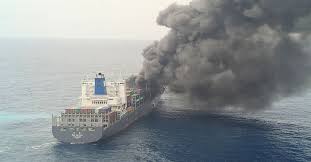Lloyd’s Register launches risk-based fire safety notation for container ships
Lloyd’s Register Unveils Innovative Fire Safety Notation

Lloyd’s Register (LR) has introduced a groundbreaking risk-based notation, Fire (C, Risk), aimed at enhancing fire safety assessments on container ships. This new framework is designed to assist shipowners, designers, and operators in implementing best-practice fire safety measures tailored to the unique risk profiles of their vessels. Set to be included in the July 2025 update of LR’s Rules and Regulations for the Classification of Ships, this initiative marks a significant advancement in maritime safety standards.
Enhancing Fire Safety Standards
The Fire (C, Risk) notation represents a pioneering approach in the maritime industry, being the first to apply LR’s ShipRight Risk Based Certification (RBC) methodology specifically to container ship fire safety. This innovative framework allows for a flexible yet comprehensive assessment of fire safety measures, from the initial design phase through to operational deployment. By utilizing this risk-based approach, ship designers and operators can identify and validate customized safety enhancements that effectively mitigate fire risks.
Accompanying the new notation is a set of guidelines that provide practical support for stakeholders in selecting appropriate fire safety solutions. These guidelines emphasize the importance of integrating advanced technologies, such as sophisticated detection systems and smart suppression technologies, into the design and operation of container ships. Gabriele Sancin, LR’s Risk Notation Technical Lead, highlighted the diverse options available to enhance fire safety, stating, “Our new notation Fire (C, Risk) ensures that tailored, effective fire safety solutions are selected from demonstrated best practices to reduce risk to crew, cargo, and operations.”
This initiative aligns with LR’s broader objectives of fostering innovation and embracing new technologies in the maritime sector. By focusing on digitalization and data-driven design verification, LR aims to set new benchmarks for safety and efficiency in the shipping industry. The introduction of Fire (C, Risk) not only enhances safety protocols but also supports the ongoing evolution of container ship design and operation.
